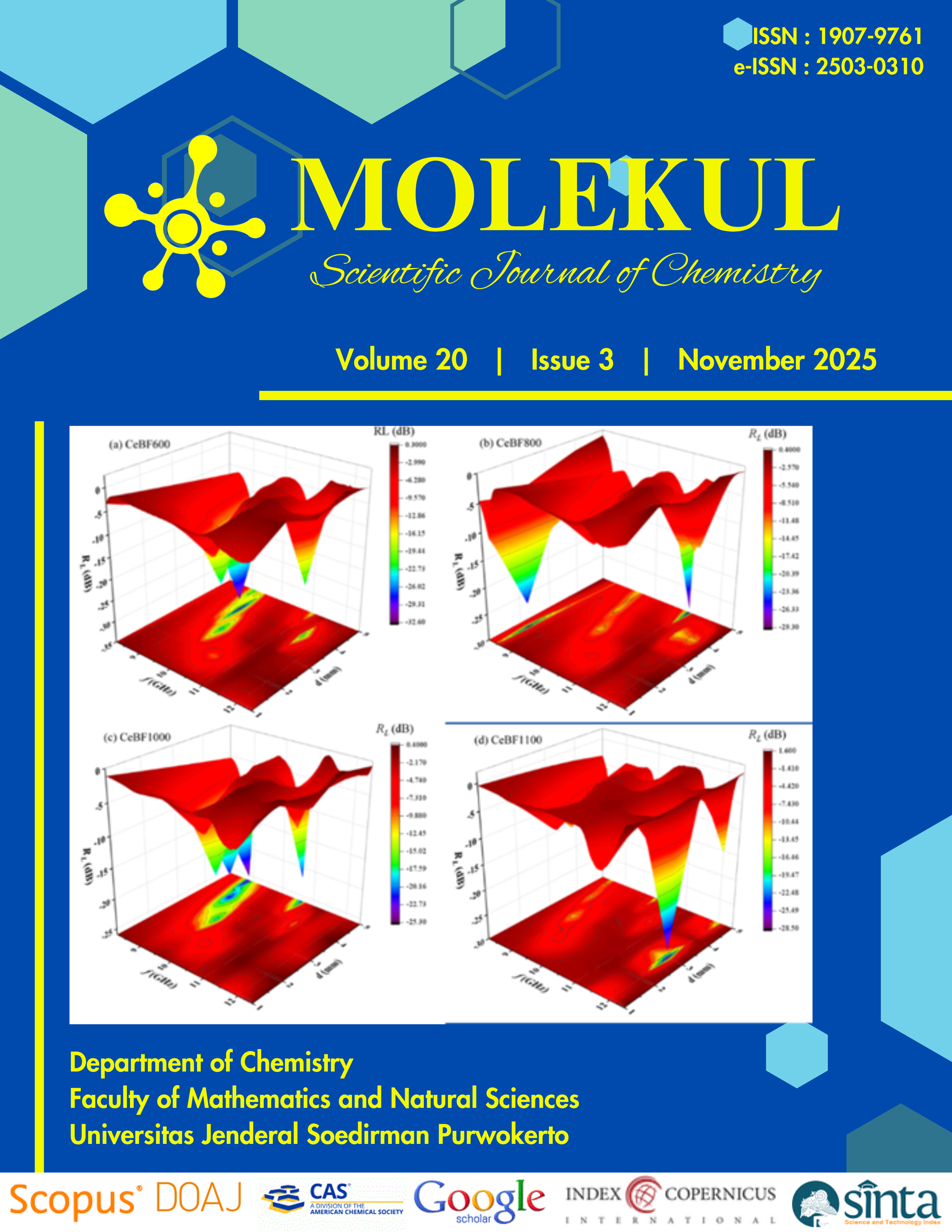Computational Study on Apoptosis-Inducing Factor (AIF)-Mediated Modulation of Menadione using Molecular Docking and Parametrized Quantum Methods
Abstract
ABSTRACT. Apoptosis-inducing factor (AIF) is a protein that is crucial for apoptosis which its dysregulation has been connected to the emergence of cancer. Mitochondria are organelles that in healthy cells function as energy factories that are important for maintaining cell life. AIF is located in the mitochondrial intermembrane space with active sites, namely FAD and NADH. Meanwhile in the recent studies, quinone compounds have shown potential as anti-cancer agents by targeting mitochondrial function, but the mechanism is still unclear. In this study, we used computational methods, including molecular docking and the Divide-and-Conquer Density Functional Tight-Binding Molecular Dynamics (DCDFTBMD) method, a type of parametrized quantum calculation, to investigate the interaction between mitochondrial AIF and menadione, as a quinone compound with anticancer potential. From the calculation result, AIF interaction with menadione was stronger in the FAD domain than in NADH. The partial charges of the ligands before and after the interactions were calculated using the DCDFTBMD technique, and the results show that the charge in the bonding area becomes more negative. This indicates the strengthening of electrostatic interactions through polarization effects in the bonding molecule. Additionally, it was discovered through this study's data that all ligands interacted with the ser-175 residue in the AIF protein. These residues are modulated by the involvement of AIF in the cell death process. From this study, it can be concluded that menadione has the potential as an anticancer agent through the AIF modulation mechanism.
Keywords: AIF, enzyme-catalyzed modulation, docking, quantum parametrization, menadione
Authors agree with the statements below:
- Authors automatically transfer the copyright to the MOLEKUL journal and grant the journal right of first publication with the work simultaneously licensed under a Creative Commons Attribution 4.0 International License (CC BY 4.0).
- Authors are able to enter into separate permission for the non-exclusive distribution of the journal's published version of the work (e.g., post it to an institutional repository or publish it in a book), with an acknowledgment of its initial publication in this journal.













